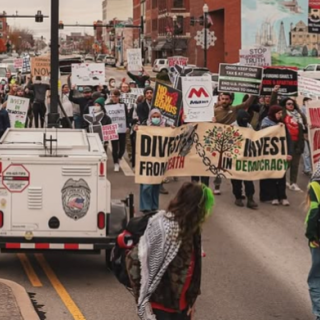It’s been almost 70 years since the idea of climate change was introduced to the world — 70 years of compiling data, furthering research, and building the kind of ironclad case that only science can build. And yet, there is still a very large portion of our population that dismisses it as coincidence or political conspiracy or both.
It’s difficult to argue against science, particularly in this digital age when technological advances eliminate all hints of theory from the science. However, as we’re dealing with human beings with human agendas; even when the science appears sound, people still have a difficult time seeing the truth.
The same can be said for many other threats that plague our planet and our own health and mortality, though these are not mutually exclusive. A better distinction may be direct threat, as any threat to our planet will also be a threat to us as humans. Unfortunately for everyone whose lives have been impacted, asbestos falls into the category of direct threat.
What is Asbestos
We’ve all heard of asbestos, but how many of us really know what it is? According to Merriam-Webster, asbestos is “any of several minerals (such as chrysotile) that readily separate into long flexible fibers, that cause asbestosis and have been implicated as causes of certain cancers, and that have been used especially formerly as fireproof insulating materials.”
It’s not a good sign when the dictionary definition of something includes the words, “causes of certain cancers.”And as more than 50 countries (not including the United States of America) have banned it, you have to wonder if the EPA is aware of this definition.
According to EPA.gov, there are six asbestos-containing products that have been banned, and 18 that haven’t been. Among those not banned are clothing and floor tile. However, it’s difficult to know if this information is up to date, as this message on the site states itself, “Due to a lapse in appropriations … all information on the EPA website may not be up to date.”
According to Asbestos.com, “Despite the fact that health concerns have prompted more than 50 countries to restrict or ban the use of asbestos since the early 1970s, others continue to mine and consume the toxic mineral in alarming quantities.”
The top-producing countries are:
- Russia: 618,037 metric tons
- Kazakhstan: 175,235 metric tons
- Brazil: 125,832 metric tons
- China: 52,860 metric tons
- India: 119 metric tons
It’s difficult to say exactly what kind of impact asbestos has on the environment, as the fibers are microscopic and not biodegradable. What we know for sure is that they travel easily, getting into the water supply, soil, and air. This makes redistribution the primary concern.
One 2006 study presented at the Health, The Environment and Justice conference confirmed this massive health problem. Because asbestos fibers are so tiny, and because they’re not biodegradable, they aren’t absorbed into the soil. Instead they merely reside on top of the soil, until the next bit of wind carries them someplace else.
The good news is that the EPA is here to protect us from this threat, at least in theory. On June 1st, 2018, the EPA introduced SNUR ― Significant New Use Rule. Though the use of the word significant is debatable (It could be significant for the wrong reasons).
The EPA calls SNUR, an “important, unprecedented action on asbestos.” But that may be more spin than substance. The rule looks to be a way to introduce new uses of asbestos into the U.S. market, rather than curtailing or banning its use.
In fact, critics of SNUR say this new rule will pave the way for both imported goods containing asbestos as well as home-grown products. The emphasis is being placed on the word “new,” as it pertains to historical evidence and long-standing documentation regarding its dangers — evidence that can conveniently be sidestepped when evaluating “new” uses of asbestos.
Why is Asbestos Harmful for Humans?Although banning the use of asbestos moving forward would be a monumental triumph and benefit, the problem would still exist, as many buildings pre-date any bans placed on its use in construction materials. And why, historically speaking, those in the construction trades have been most at risk.
Once swallowed or inhaled, the asbestos fibers get trapped in the lungs or abdomen and can cause a number of problems including lung cancer and tumors, known as mesothelioma. The Mayo Clinic defines mesothelioma as, “a type of cancer that occurs in the thin layer of tissue that covers the majority of your internal organs (mesothelium).”
Mesothelioma can take years or decades to develop, but once it does it’s a very aggressive type of cancer that the Mayo Clinic says isn’t curable for most people. Another common condition for those with exposure to asbestos is asbestosis ― the buildup of scar tissue in the lungs resulting from the inhalation of asbestos particles.
According to the Canadian Centre for Occupational Health and Safety, other health effects associated with asbestos exposure include several pleural abnormalities. These abnormalities develop in the chest cavity and can also affect family members, including children of workers who carry home asbestos fibers on their clothing. Considering that eight percent of children 17 and under suffer from asthma, this ought to be more of a concern.
Asbestos exposure has also been linked with depressed immune function, which hinders our body’s ability to protect us from illness and disease. Along with the possibility of kidney failure, due to the development of fibrous masses in the abdominal cavity.
What is Being Done to Prevent Asbestos Use?Unfortunately, not much is being done in the U.S. In fact, the new EPA guidelines appear to be a step in the wrong direction. It’s a little sad and cynical to consider that the EPA shows the same lack of concern for the environment as the FDA shows for our food supply, but correlations exist.
The same way dozens of countries around the world have banned asbestos containing products, so too have dozens of countries banned genetically modified foods. The one similarity between the two are the correlations between each and the development of certain types of cancers.
The other similarity is that the U.S. government has decided to ignore these correlations, along with their duty to first and foremost protect the American people, in favor of the bottom line: Capitalism. Money is the ultimate trump card, and one the U.S. often plays with great gusto. How else can it be explained?



